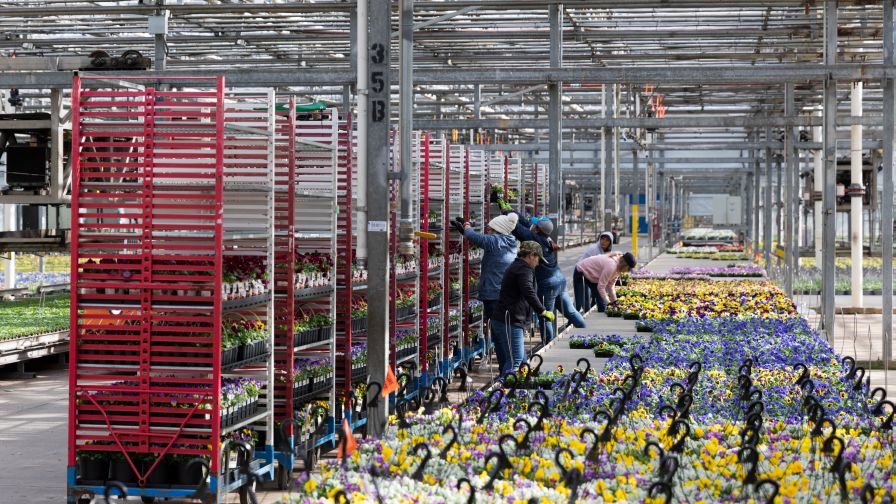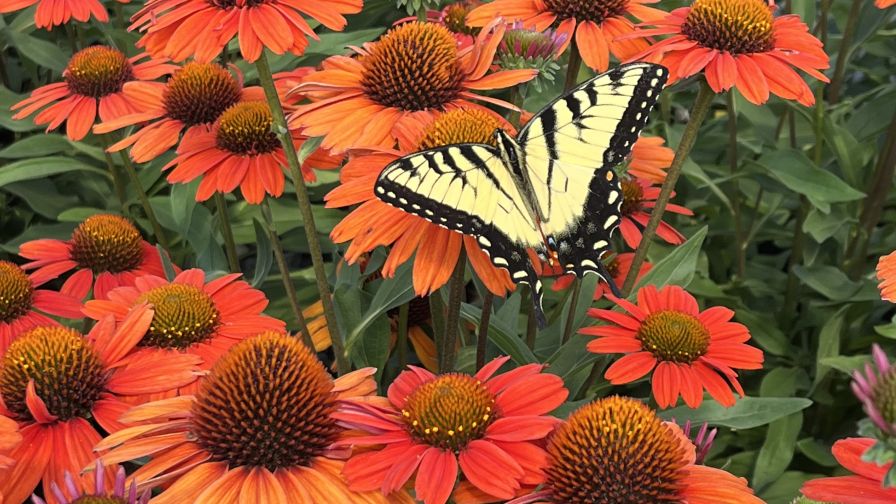Rooting Sanitation Recommendations
Selecta First Class is committed to producing and shipping disease-free plant material. To ensure the highest standards possible, a number of steps and precautions are taken throughout the process of cutting production to minimize the risk of contamination.
As the old adage goes, “A chain is only as strong as its weakest link.” So it’s also important that good practices are followed in propagation to ensure success. The sanitation procedures I’ll outline are important to maintain a clean program and bring your propagation to a successful outcome.
Facilities
– Keep all walkways and areas under benches free of weeds, as well as all plant debris.
– Drainage systems must rapidly remove all standing water within the greenhouse to decrease the pressure from water-borne diseases, fungus gnats and shore flies.
– When propagating cuttings from more than one supplier, a clear physical separation should be maintained throughout the production cycle. If you must mix production sites on the same bench, a minimum of four feet of separation is recommended between groups.
Procedures
– Quality control tags, which arrive with cuttings, should be placed in propagation trays as cuttings are stuck. The barcode on Selecta’s tags, for example, represents a location on Selecta’s farm where cuttings originated. This information is very important for tracing forward or backward in the event of a problem.
– All crops should be scouted weekly by trained employees for early signs of insects or disease symptoms.
– At the conclusion of each rooting cycle, remove all plant debris from the propagation area. Benches and floors should be disinfected completely after each crop. Any equipment that comes in contact with rooted or unrooted cuttings, such as carts and tables, should also be disinfected weekly with quaternary ammonia compound (QAC).
Sanitation
– Cuttings should not be sub-irrigated at any time.
– Good sanitation protocols require workers to have a clean barrier between their clothes and plants to prevent unintended spread of diseases. Aprons and gloves should be used to create a clean barrier. Wash or disinfect aprons daily to prevent disease spread.
– With concrete floor production, recycled water should not be used to irrigate the crop. Propagation trays should be raised off the floor to ensure no water can be pulled up from the floor or bench. Footbaths, not mats, containing a QAC should be set up at the entrance to each greenhouse. The solution should be changed whenever it appears dirty, or at least twice daily. Rubber boots are highly recommended so the entire foot can be submerged and disinfected.
– All employees involved in unpacking, processing or sticking cuttings, including growers and general greenhouse workers, should wash their hands thoroughly with hot water, soap and a hand brush before handling cuttings. A thorough wash of fingernails and cuticles is critical to prevent the spread of diseases.
– Tobacco is known to carry plant viruses such as tobacco mosaic virus (TMV). Smoking should not be allowed anywhere near young plant production. Smokers must leave their cigarettes (or chewing tobacco) in their cars and not take any tobacco products into the greenhouse. Smokers entering the greenhouse should wash their hands with an antibacterial soap or use hand sanitizer before putting their gloves on.
Plant Maintenance
– Trimming machines are great for saving labor but are not recommended because they can spread virus or bacteria quickly.
– When using shears, soak shears in disinfectant between varieties. We recommend a 1 percent Virkon sulphur solution or reconstituted non-fat dry milk (20 percent weight/volume plus a wetting agent), or 1-to-10 dilution of 0.6 percent household bleach. Tools must be rotated to allow time (one to three minutes) for proper sanitization.
– When patching or fixing trays, make sure soil or plant material doesn’t fall on other plants and that all plant debris is cleaned up when finished.










